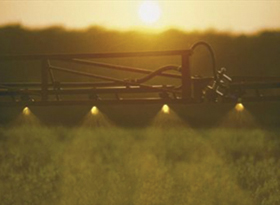The National Wildlife Federation published a long article a couple years ago that caught my eye. It was the first publication that talked about the potential for rural ag communities to profit from the growing business of cover crops. Besides profiting from the benefits you see in the soil and in productivity, the article points out that some are profiting from their experience by becoming a supplier of cover crop seed, a crop adviser to others, helping others plant or terminate their cover crop or grazing fees.
The article also discusses the crazy history of cover cropping, and how the introduction of synthetic fertilizers and heavy machinery changed America’s thinking about cover crops. Only in the last 20 years has our focus come back to the benefits of cover crops. What was interesting about the article was the many ways in which rural farm families can become active in the “business” of cover crops, not just the planting.
Websites like the Midwest Cover Crop Council feature more than 40 entrepreneurs. Many are called entrepreneurs simply because they have been innovators in the USE of cover crops. Some began with annual ryegrass or hairy vetch or cereal rye and then experimented to find the best fit for their acreage, weather and crop rotation.
But some, like Jim and Jamie Scott, from northeast Indiana, also saw the potential to translate their first-hand experience with annual ryegrass and other cover crops into a side-business. While he and his family still farm about 2000 acres in and around Pierceton, Indiana, he has added to his income by arranging to fly on cover crop seed for other nearby farmers. He contracts for the seed to be delivered to a nearby airport, has a pumper truck there and contracts with pilots to fly on the seed in late summer, while corn and beans are still in the field. Aerial seeding has largely replaced the old drilling method of applying cover crop seed. At last count, Jamie’s company was coordinating the seeding of about 60.000 acres. Doing so, presumably, has created additional cash flow for his business.

In like fashion, others have turned their knowledge and experience into additional revenue by becoming an adviser to neighboring growers who are just getting started in cover crops. Besides earning a few thousand extra dollars a year, those entrepreneurs are also helping to spread the use of cover crops quickly, which then helps other growers realize the benefits of cover crops.
Incidentally, the Midwest Cover Crop Council’s site has annual reports of cover crop useage for each of the Midwest states. It provides a lot of information about who’s doing what: in research and in practice. Click on the state you want and then look for the latest reports. Here’s Indiana’s report for 2015.





